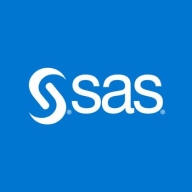

SAS Data Management and Azure Data Factory are prominent competitors in the data management and integration sector. Azure Data Factory appears to have the upper hand due to its seamless integration with Azure services and user-friendly interface, despite potential improvements in other areas.
Features: SAS Data Management stands out for its comprehensive data quality and integration capabilities, providing a unified view of enterprise data and accommodating multiple data sources. It also excels in reporting and customization. Azure Data Factory offers robust ETL functionalities with a user-friendly visual interface, highlighting its drag-and-drop feature for data workflows. It provides flexibility and scalability with built-in connectors for diverse sources.
Room for Improvement: SAS Data Management is often criticized for its high cost with a complex licensing model. Connectivity issues requiring third-party solutions and limited integration flexibility are noted drawbacks, coupled with a need for better documentation and simplified installation. Azure Data Factory could enhance its complex pricing model, real-time processing capabilities, and some missing connectors. Its integration and support for streaming data are also areas that require significant improvement, along with performance and UI enhancements.
Ease of Deployment and Customer Service: SAS Data Management primarily runs on-premises and is noted for its reliable customer service, although the support knowledge base is sometimes seen as lacking. Azure Data Factory, leveraging cloud deployments, provides great flexibility and scalability, although it faces mixed reviews in customer service responsiveness and technical support depth.
Pricing and ROI: SAS Data Management is seen as expensive with a complex pricing structure, yet offers significant ROI in sectors requiring compliance. The investment is justified by its integration and data standardization capabilities. Azure Data Factory operates on a pay-as-you-go model that offers flexibility but can lead to high costs if not managed well. Its competitive pricing makes it accessible to various businesses and tends to yield favorable ROI due to efficient data processing, despite a complex pricing estimation.
Our stakeholders and clients have expressed satisfaction with Azure Data Factory's efficiency and cost-effectiveness.
The technical support is responsive and helpful
The technical support from Microsoft is rated an eight out of ten.
The technical support for Azure Data Factory is generally acceptable.
The support for SAS in Brazil is not the best one, but the support in Sweden is really good, as they visit the company and work to solve the issues.
Azure Data Factory is highly scalable.
The solution has a high level of stability, roughly a nine out of ten.
Azure Data Factory should consider how to enhance integration or filtering for more transformations, such as integrating with Spark clusters.
Sometimes, the compute fails to process data if there is a heavy load suddenly, and it doesn't scale up automatically.
When using Git services, there are challenges with linked services and triggers getting overridden when moving between different environments (Dev, UAT, Prod).
There is significant room for improvement, especially with regard to using a hybrid approach that involves both CAS and persistent storage.
The pricing is cost-effective.
It is considered cost-effective.
From my experience, SAS Data Management is an expensive tool.
The orchestration features in Azure Data Factory are definitely useful, as it is not only for Azure Data Factory; we can also include DataBricks and other services for integrating the data solution, making it a very beneficial feature.
The platform excels in handling major datasets, particularly when working with Power BI for reporting purposes.
It connects to different sources out-of-the-box, making integration much easier.
The best features I appreciate about SAS Data Management tool are that it's easy to create the flows and schedule data, and the tables are not too big, making it easy to control the ETL process, including user access which is also easy to manage in SAS.
SAS Data Management stands out because of its data standardization, transformation, and verification capabilities.
| Product | Market Share (%) |
|---|---|
| Azure Data Factory | 5.2% |
| SAS Data Management | 0.9% |
| Other | 93.9% |


| Company Size | Count |
|---|---|
| Small Business | 31 |
| Midsize Enterprise | 19 |
| Large Enterprise | 55 |
| Company Size | Count |
|---|---|
| Small Business | 7 |
| Midsize Enterprise | 1 |
| Large Enterprise | 8 |
Azure Data Factory efficiently manages and integrates data from various sources, enabling seamless movement and transformation across platforms. Its valuable features include seamless integration with Azure services, handling large data volumes, flexible transformation, user-friendly interface, extensive connectors, and scalability. Users have experienced improved team performance, workflow simplification, enhanced collaboration, streamlined processes, and boosted productivity.
Every decision, every business move, every successful customer interaction - they all come down to high-quality, well-integrated data. If you don't have it, you don't win. SAS Data Management is an industry-leading solution built on a data quality platform that helps you improve, integrate and govern your data.
We monitor all Data Integration reviews to prevent fraudulent reviews and keep review quality high. We do not post reviews by company employees or direct competitors. We validate each review for authenticity via cross-reference with LinkedIn, and personal follow-up with the reviewer when necessary.